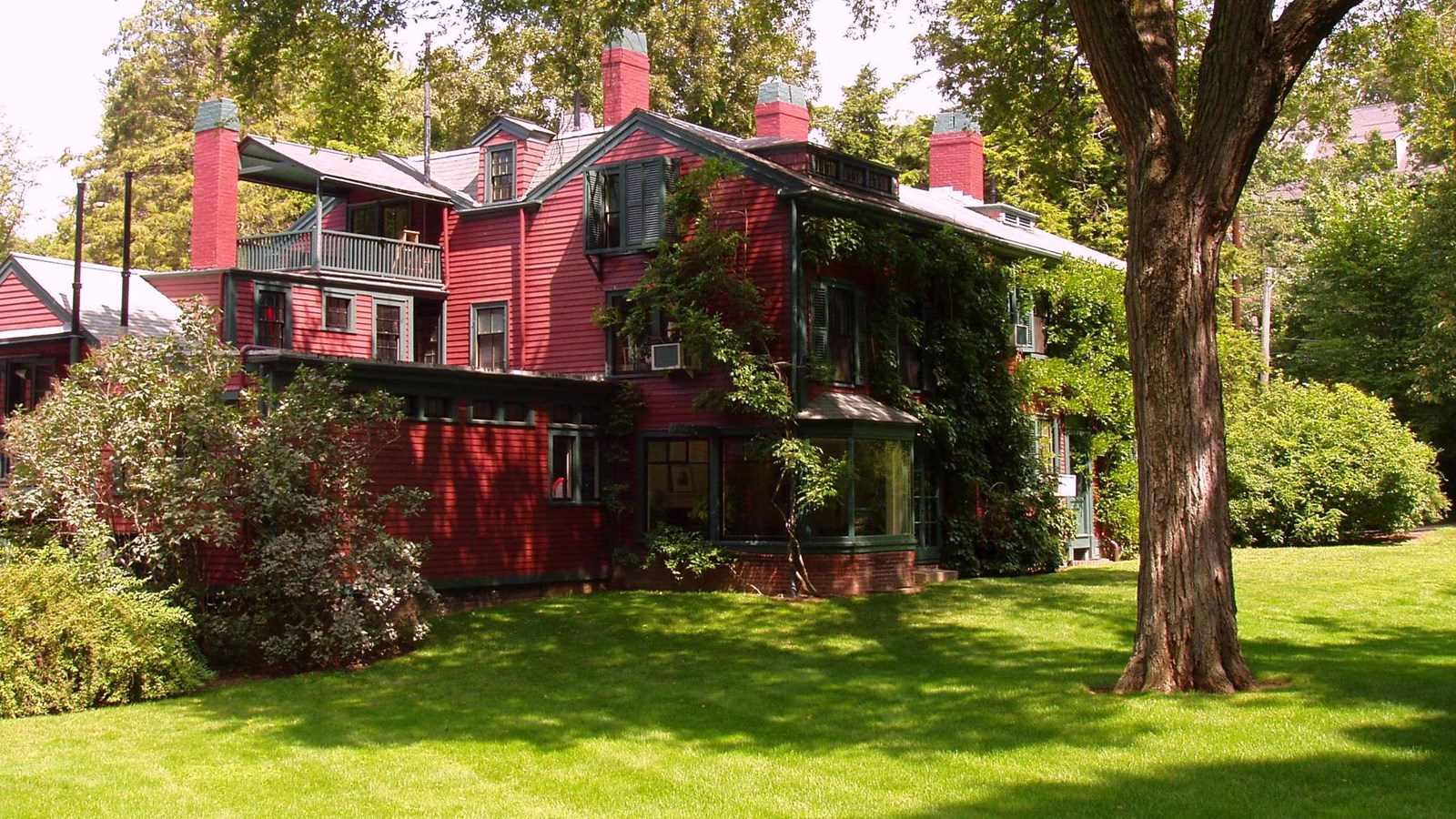Place
Frederick Law Olmsted National Historic Site

Photo by Daderot, CC BY-SA 3.0, https://commons.wikimedia.org/w/index.php?curid=6541921
Frederick Law Olmsted, the father of American landscape architecture, created pastoral and picturesque scenery believed to cure stress caused by urban living. Before entering the profession of landscape architecture at the age of 35, Olmsted worked as a farmer, author, editor, and publisher. His successful design of Central Park created job opportunities in the Boston area including designs for the Back Bay Fens, the Arnold Arboretum, and a commission for the Emerald Necklace, Boston’s connected park system. Olmsted moved his family to Brookline, Massachusetts where he established both his home and professional landscape architecture firm in an old farmhouse on two acres of property he restored and renamed “Fairsted,” which is today administered by the National Park Service as the Frederick Law Olmsted National Historic Site.
Olmsted headed his firm until his retirement in 1895, working on projects throughout the country. He incorporated his philosophy into designs for parks, college campuses, private estates, arboretums, and residential communities located throughout the nation. His most famous designs include Central Park and Prospect Park in New York and Boston’s Emerald Necklace park system. Olmsted passionately advocated for the preservation of America’s wild and cultural resources, including National Parks. His professional landscape architecture firm contributed designs to some of the nation’s most scenic parks including Yosemite National Park and the Niagara Reservation New York State Park.
In addition to being a gifted landscape architect, Olmsted taught a new generation of planners to continue his commitment to the restorative value of the natural environment. Many well-known landscape architects of the era apprenticed with his firm including Charles Eliot, Olmsted’s stepson John C. Olmsted, and his son Frederick Law Olmsted, Jr. Charles Eliot and John Olmsted became partners in the firm, while many other important designers worked with the firm as well, including Percival Gallagher, James Frederick Dawson, Henry Vincent Hubbard, and Edward Clark Whiting. After Olmsted Sr. retired, his stepson and his son took over the firm. The firm continued a wide range of landscape design and planning projects and its portfolio includes 6,000 projects -- more than 700 public parks, 2,000 private estates, 350 subdivisions, 250 college campuses, and 100 residential institutions, to name a few.
The site includes the house with its century-old office and archives with its nearly one million records of Olmsted firm designs. Fairsted also functioned as a family retreat intended for quiet pastimes and as a school specializing in environmental design for aspiring landscape architects. Built in the early 19th century, the house reveals the growing demand for Olmsted designs. The north side of the home had a number of expansions throughout the 20th century to accommodate the increasing size of the firm.
Renovated to their appearance in 1920, the Fairsted grounds illustrate many of Olmsted’s design principles. The landscape has four distinct areas: the Carriage turn, the Hollow, the rock garden, and the south lawn. The carriage turn plantings include a giant hemlock and other plants that partially shelter the house from view. The Hollow, a sunken grotto, provides a place for quiet contemplation. A short trail through the rock garden has the feel of traveling through a miniature wilderness. At its end, the trail opens into the expansive vista of the south lawn, with a magnificent elm as a focal point.
It is important to note that Olmsted Sr.'s work is so remarkable in the context of landscape conservation because he addressed both environmental and social issues with his designs -- this integrated approach remains very relevant today. A tour of the grounds and the home brings to life the landscape principles of Fredrick Law Olmsted. Witnessing those principles at Fairsted will enable visitors to identify and understand the characteristics that distinguish his designs.
The Olmsted Center for Landscape Preservation is an outgrowth of the park and has made significant contributions to the field of landscape preservation in the past twenty years as well.
The Frederick Law Olmsted House, a unit of the National Park System, is located at 99 Warren St. in Brookline, MA. The house and grounds have been designated a National Historic Landmark. For more information, visit the National Park Service Fredrick Law Olmsted National Historic Site website.
To discover more Massachusetts history and culture, visit the Massachusetts Conservation Travel Itinerary website.
